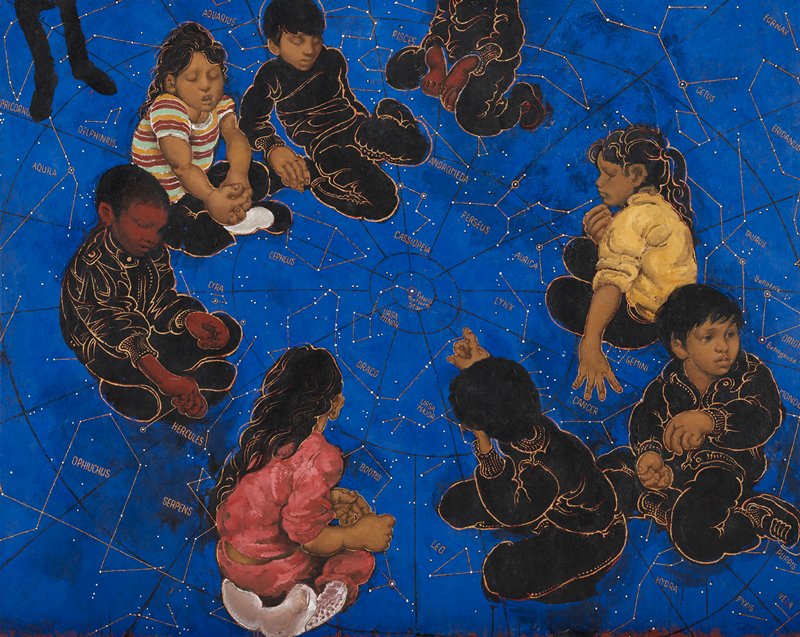Collection Reflections by Art Team
Collection Reflections by Art Team are a series of our perspectives, and other teen perspectives on artworks in Mia’s collection. We select works of art to engage with and reflect upon, while also inviting you to reflect and explore a couple of prompts for each selected artwork. We are passionate about making art accessible for young people & teens. We hope you like our reflections, as we are inspired by the current moments in our society and our lived experiences as BIPOC young people.
If you have a work of art in Mia’s collection that you would like to share your reflections on, we would love to hear from you! Email cprice@artsmia.org for more information.
Polaris by Martin Wong

Martin Wong (American, 1946-1999), Polaris, acrylic on canvas. The P.D McMillan Memorial Fund, 2017.35
Reflections from Art Team member Mateo
Polaris, a painting made by Martin Wong. It can be found in Mia’s collection online, and the description explains it with the children from various ethnicities playing marbles on a map of constellations. In light of hope, medicine and healing through art, Polaris portrays this theme in a way that connects to our team. Art team is a BIPOC (Black, Indigenous, People of Color) group of young people, and Polaris depicts this with these children. Our group doesn’t play like these kids are doing, but through our work, our art, and the connections we form with each other, healing, medicine and hope are created. Speaking for myself, this is how I feel from Art Team as our small community, gathering together (virtually & sometimes in-person). Working with people that I care about and doing meaningful work, is like medicine to me. It keeps me hopeful about the fact that even through a pandemic, I can still keep a connection with my team, and that they can keep a connection with me.
Reflection questions for you to consider
Where do YOU find your own communities like this?
How do you find it healing or like medicine when you are with these communities, or when you are making art?
Fringe by Rebecca Belmore

Rebecca Belmore (Anishinaabe-Canadian, born 1960), Fringe, 2007, Transparency in light box (one of an edition of three). Gift of funds from Donna and Cargill MacMillan Jr., 2010.56
Reflections from Art Team member Mahawa
This art piece by Rebecca Belmore could have a variety of perspectives- violence, fear, healing? From my point of view I see a female portrayal of her battles and struggles. She’s laying in a position that shows vulnerability and tiredness. Belmore states “the wound is not fatal but the scars will never disappear”. She uses her scars as a sign of healing and therapy .Through art there can be hope, medicine and healing, as portrayed in this piece. Belmore’s piece represents her heritage and trauma inflicted on Indigenous people, also including hope and healing, as the wound on this woman is not fatal and will heal with a scar left behind to represent the trauma. I personally can relate to Belmore’s piece in a way that is different, but has similar connections. My family’s history and trauma that they have endured, with their strength to fight through, has connected me to this piece.
Reflection questions for you to consider
What does this piece speak to you about?
In what way can trauma leave a message of hope?
